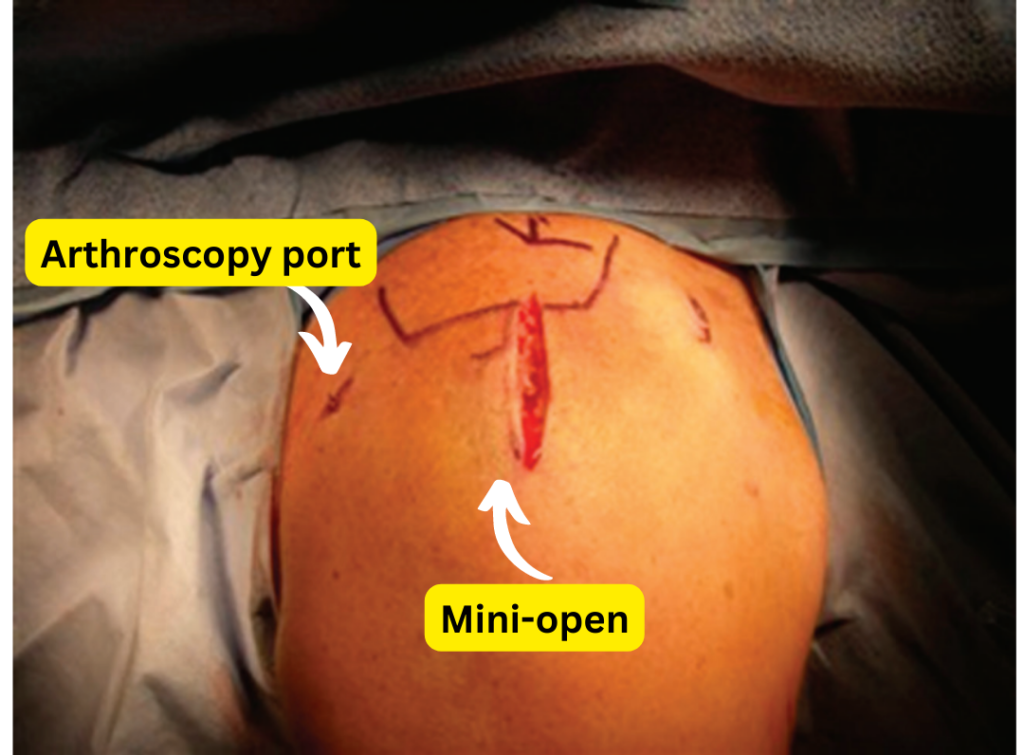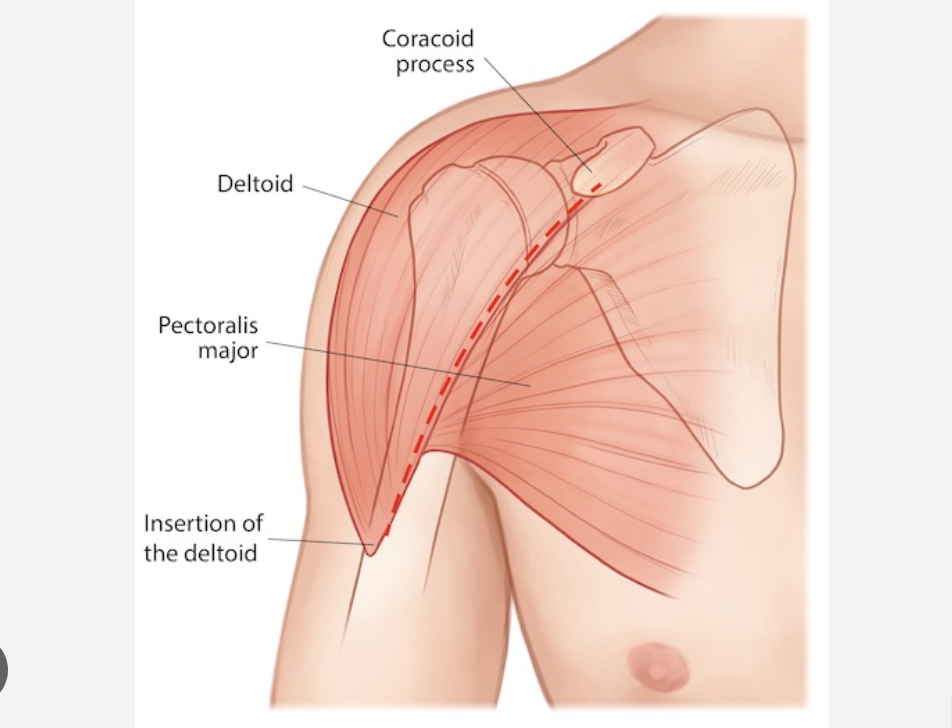Rotator cuff
Anatomy
The rotator cuff is a group of muscles and tendons located in your shoulder joint. It plays a crucial role in the stability and movement of your shoulder. I can provide you with an interactive explanation of the rotator cuff. Please follow the instructions below:
Understanding the muscles:
The rotator cuff consists of four muscles:
– Supraspinatus: Located on the top of your shoulder blade.
– Infraspinatus: Situated on the back of your shoulder blade.
– Teres minor: Positioned beneath the infraspinatus muscle.
– Subscapularis: Located on the front side of your shoulder blade.
let us understand more –
Rotator cuff injury
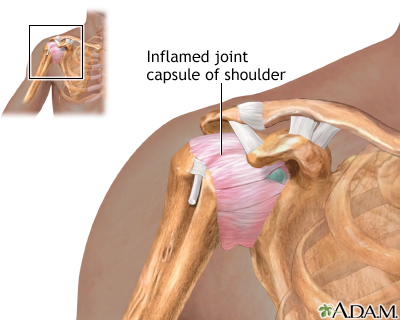
source : https://medlineplus.gov/ency/article/000438.htm
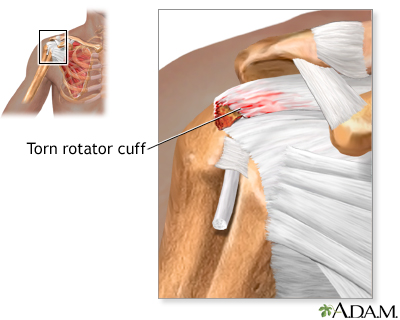
source: https://medlineplus.gov/ency/article/000438.htm
How to self diagnose Rotator cuff injury:
– Raise your arm and touch the area where your upper arm connects to your shoulder. This is the location of the rotator cuff.
– Now, gently move your arm in different directions and pay attention to any pain, weakness, or limited range of motion you may experience.
– These symptoms can indicate a rotator cuff injury, which is damage or tearing of the muscles or tendons in the rotator cuff.
Types of rotator cuff injuries:
– Rotator cuff tendonitis: Inflammation of the tendons in the rotator cuff, often caused by overuse or repetitive motions.
– Rotator cuff tear: A partial or complete tear in one or more of the rotator cuff tendons, commonly caused by trauma, aging, or degenerative changes.
Treatment options:
– Rest and activity modification: Avoid activities that worsen the pain and give your shoulder time to heal.
– Ice or heat therapy: Applying ice packs or warm compresses to the affected area can help reduce pain and inflammation.
– Pain medication: Over-the-counter nonsteroidal anti-inflammatory drugs (NSAIDs) like ibuprofen can help manage pain and reduce swelling.
– Physical therapy exercises: A trained therapist can guide you through exercises that strengthen the rotator cuff muscles and improve shoulder stability and range of motion.
– Corticosteroid injections: In some cases, your doctor may recommend injecting corticosteroids into the shoulder joint to reduce inflammation and relieve pain.
– Surgery: If the rotator cuff tear is severe or doesn’t respond to conservative treatments, surgery may be necessary. Your doctor can explain the surgical options, such as arthroscopic repair or open repair.
Rotator cuff Repair
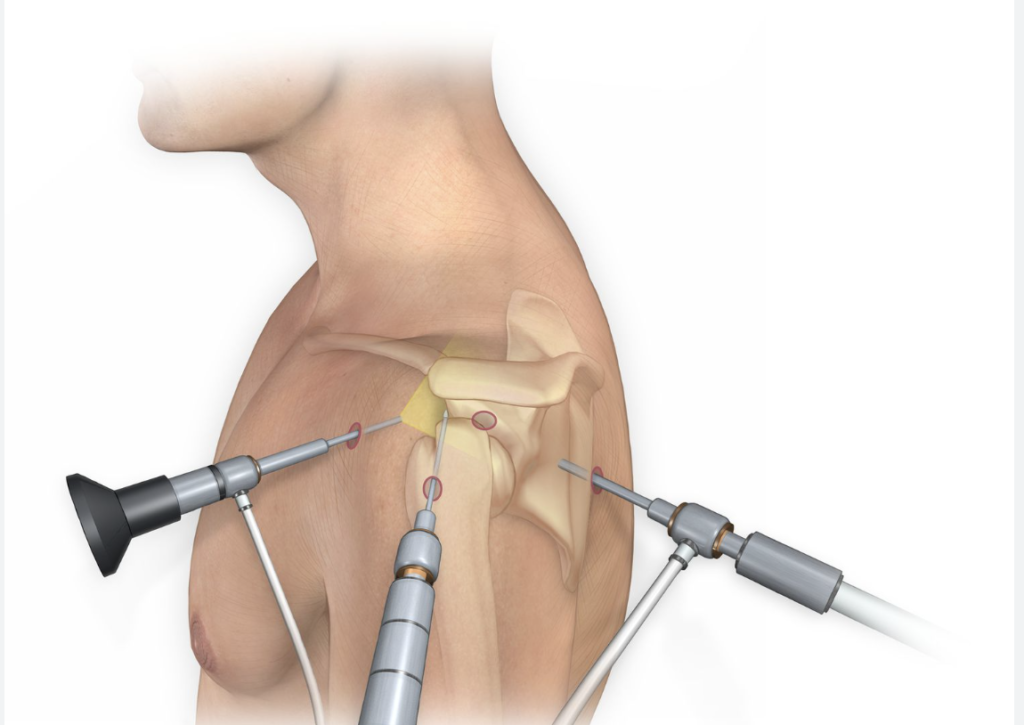
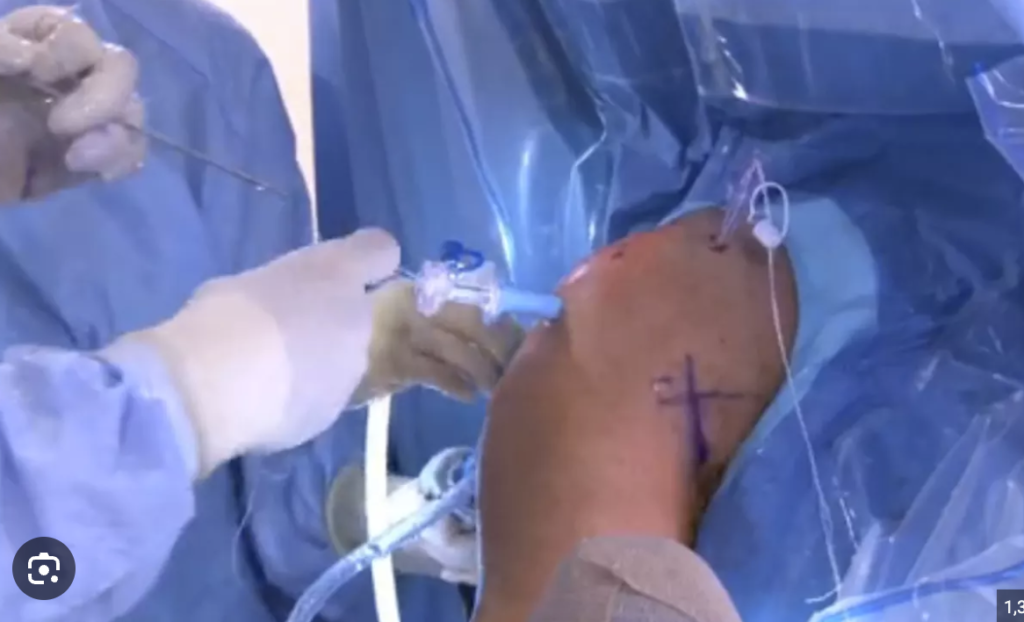
The Need for Rotator Cuff Repair:
– Not all rotator cuff injuries require surgery. However, for severe tears or cases where conservative treatments have failed to provide relief, surgery may be recommended.
– The goal of rotator cuff repair surgery is to reattach or repair the torn tendons, promoting healing and restoring shoulder function.
Surgical Procedure:
Arthroscopy
Mini-open repair
open repair
Arthroscopy:
– It is one of the latest treatment.
– During surgery, the torn tendon is typically reattached to its original attachment point on the bone using sutures or anchors.
– The specific details of the surgical procedure may vary, and patients should consult with their surgeon for personalized information.
Postoperative Rehabilitation:
– Rehabilitation plays a crucial role in the recovery process after rotator cuff repair surgery.
– The initial phase of rehabilitation focuses on protecting the repair, reducing pain, and gradually increasing mobility. This involves wearing a sling and avoiding strenuous activities.
– Physical therapy is a vital component of rehabilitation. The patient will work with a physical therapist who will design a customized exercise program to restore strength, flexibility, and range of motion in the shoulder.
– The rehabilitation program typically progresses through various phases, gradually introducing more challenging exercises as the shoulder heals. Compliance with the prescribed exercises and attending physical therapy sessions is important for optimal recovery.
Recovery Time:
– The recovery time after rotator cuff repair surgery can vary depending on factors such as the extent of the tear, surgical technique, and individual healing capacity.
– Generally, it takes several months to regain full function of the shoulder. The patient should be patient and follow their surgeon’s and physical therapist’s guidance for a successful recovery.
Long-Term Care:
– Once the shoulder has healed, it’s important to maintain good shoulder health and prevent future injuries.
– Avoiding repetitive overhead activities, maintaining proper posture, and incorporating regular shoulder-strengthening exercises can help prevent re-injury and maintain shoulder strength and stability.
Remember, it’s crucial for the patient to consult with their healthcare provider, orthopedic surgeon, or physical therapist for personalized advice and guidance based on their specific condition and progress.
Why to choose us !
As a patient considering rotator cuff repair, it’s important to understand why our clinic is the best option for your care. At our clinic, we prioritize providing comprehensive and high-quality treatment to ensure the best possible outcomes for our patients. Here’s why we believe our clinic, with Dr. Gaurav Jain as the surgeon and Dr. Pooja Jain as the physiotherapist, is the ideal choice for your rotator cuff repair journey:
1. Experienced and Highly Skilled Surgeon: Dr. Gaurav Jain is an experienced and skilled surgeon specializing in shoulder surgeries, including rotator cuff repair. With a deep understanding of shoulder anatomy and extensive expertise in surgical techniques
2. Personalized Treatment Approach: We believe in a patient-centric approach, tailoring our treatments to meet your specific needs. Dr. Gaurav Jain will carefully evaluate your condition, considering factors such as the extent of your rotator cuff tear, your overall health, and your personal goals.
3. Integrated Rehabilitation: Rehabilitation plays a crucial role in the recovery process after rotator cuff repair. Dr. Pooja Jain, our experienced physiotherapist, will work closely with you to design a tailored rehabilitation program that focuses on restoring strength, mobility, and functionality to your shoulder.
4. State-of-the-Art Facilities and Technology: Our clinic is equipped with state-of-the-art facilities and utilizes the latest advancements in surgical techniques and rehabilitation equipment. This ensures that you receive the highest standard of care.
5. Compassionate and Supportive Environment: We understand that undergoing surgery and rehabilitation can be a challenging and emotional process. Our clinic fosters a compassionate and supportive environment, where our entire team is dedicated to providing you with the utmost care, empathy, and encouragement throughout your treatment journey.
In summary, our clinic, with Dr. Gaurav Jain as the surgeon and Dr. Pooja Jain as the physiotherapist, offers the expertise, personalized approach, integrated rehabilitation, advanced facilities, and compassionate care that make us the best option for your rotator cuff repair. We are committed to helping you regain shoulder function, alleviate pain, and enhance your overall quality of life.

